Day 70 The Best Lost and Found in Kyoto
Away from the busy streets of Osaka, I found my way to the cycling road along Yodo River. It is a long stretch of quiet way surrounded by trees to get to Kyoto. The sun was out and so was a turtle, slowly crossing the street in front of me.
Late in the afternoon that day, it suddenly occurred to me that I actually cycled slightly further than a normal person as I got to the first of many temples in Kyoto. The five story pagoda in Toji Temple, one of Japan’s national treasures, somehow seemed more significant than my previous visit. I actually cycled to the old capital of Japan!
Every detail of these old buildings is an art of skilled workmanship. Remember the cigar-chomping onigawara in Matsuyama? Here are some (…without cigars) in the works on top of a temple.
The Temple’s gate was closing at 5pm. I hurried myself out and started cycling to a hostel. Where I thought the place would be turned out to be a wrong location. Over my bike with a map, I was puzzled. I am bad at directions, but how in the world do you get lost with a mobile phone these days anyway?? Something wasn’t right.
Thankfully, I didn’t become a pink elephant on the street of Kyoto. It took no time before someone asked me if I needed help. The old man who wanted to help was not much help, but a woman on a blue bike soon cycled up to see if I was okay. (I must have had some seriously lost look.) She taught me how to read the Kyoto specific way of writing the addresses, which once you knew was very helpful in navigating in town. Neither my phone nor I had known how that worked till then. She offered to guide me to my destination, and there we were, cycling through the small historic streets of Kyoto, finding street names on some unexpected locations I would not have noticed.
While we were in search of the hostel, the woman asked me what I was going to do for dinner. I told her I was supposed to meet up with a woman cyclist in Kyoto who was following my tour on twitter.
“Why don’t you invite her to come to my place and we cook dinner together?”
She was actually out cycling for grocery shopping and found me on her way. She said she’d been on a cycling tour in Hokkaido some years ago, looking much like me with big panniers on a bicycle. The more we talked the more things we found in common. She said, “We’ve got the same smell,” meaning, we were very much alike. There are definitely laws of attraction in this world.
After dropping off my luggage at the hostel, we headed out for grocery shopping on our bikes. With our blinking red lights flashing on our backpacks, we (I mean mostly she) picked what we needed for the meal. In the grocery stores of Kyoto, you can find Kyo yasai, traditional vegetables grown in Kyoto. An example of such are these green onions, called, Kujo negi.
The word “Kyo” can be seen on many produce. Here is Kyo mizuna, potherb mustard. Though it looks the same as the ones without “Kyo,” it sounds more classy to me. That reminds me of many vegetables in Okinawa, having the word “shima” (island). Either way they emphasize the local, traditional, unaltered produce.
Kyo age is fried tofu, but it was heavier than in other regions’.
“What are you making tonight?” Kyoto’s butcher could sense our mini adventure in the grocery store.
I often talk about “dashi” in my blog, which is the stock taken from katsuobushi (dried skip jack tuna flakes), konbu (a type of seaweed), shiitake mushrooms, or niboshi (dried sardines). It becomes the base for many Japanese dishes with umami, known as the fifth sense of taste, as well as sweet, salty, sour, and bitter. This time my new friend, Midori-san, was using both katsuobushi and konbu. As mysterious as this may be to some of you, the process of taking the dashi is simple and much quicker than say, making chicken broth. Getting the delicious flavor from non-fat based products (as opposed to butter, oil, cream, etc., which I also love) is a unique essence to traditional Japanese cuisine.
Homemade pork dumplings were on the menu.
Don’t they look delicious, all steamed up? While we were having drinks and making dinner, two more twitter followers in Kyoto joined us. None of us knew each other before, but all five of us cycled to get to this instant dinner party with some kind of food for the table.
Because I was interested in the regional, local Japanese food, we bought some mochifu. It is made with wheat gluten, and has been historically eaten since the era when meat and fish were banned among Zen monks, as a valuable source of protein. Midori-san sliced them, placed them nicely on the skewers, grilled and added a little bit of soy sauce in the pan. I LOVE mochifu for that gooey, mochi-like texture. It is also often eaten with sweet miso on top, known as miso dengaku.
Another protein-rich vegetarian product known around the world is tofu, made from soy beans. During the process of heating up soy milk to make tofu, a thin layer of skin forms on top of the liquid. It is called yuba in Japan, known as bean curd in English. We had yuba sashimi with grated ginger and soy sauce, which was refreshing with nice texture. (It’s the yellow square sheets on the brown plate below.) Many Japanese dishes, particularly in Kyoto, have close relations to the history of Zen Buddhism. That particular type of cuisine is called, shojin ryori, and includes no animal product.
Bicycles and food quickly turned five total strangers into dinner party friends in Kyoto. Not only am I finding the sachi’s (delicacies) of Japan, I am also getting found by kind new friends with such open heart. What do I know, getting lost was the best welcome I could have had into this ancient capital of Japan.
4 Responses to Day 70 The Best Lost and Found in Kyoto
Comments! Yay!
« Day 67-69 Cycle & Eat Till You Drop in Osaka, The Kitchen of the Nation Video: 3 Minute Trip to Kyoto, the Ancient Capital of Japan [Day 71-77] »


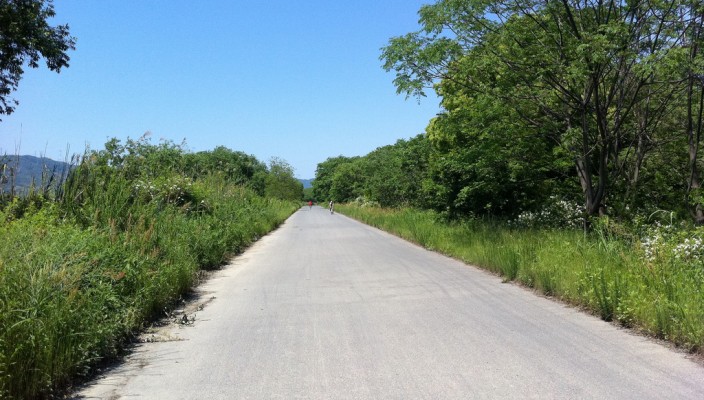


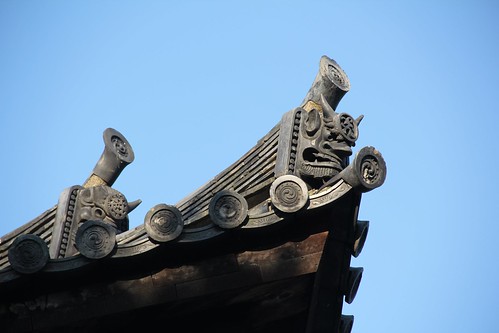
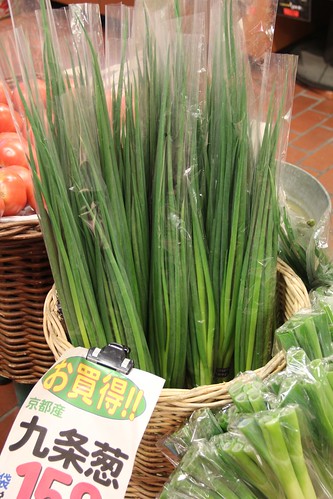

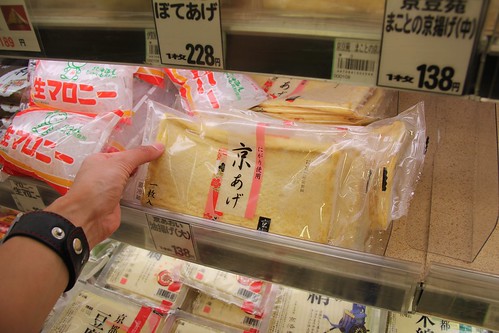
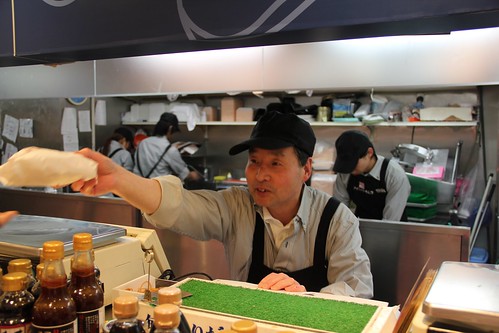
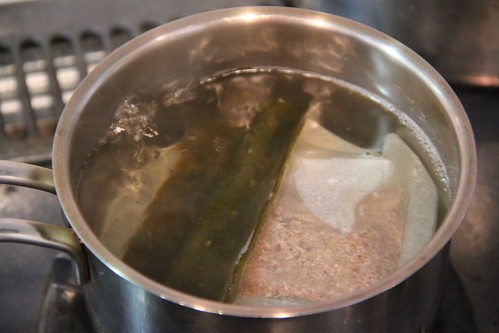
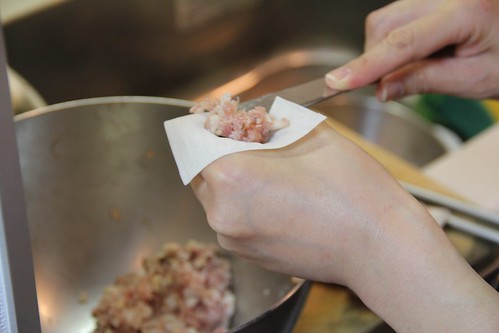

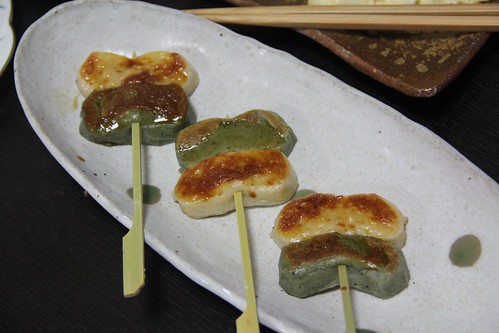
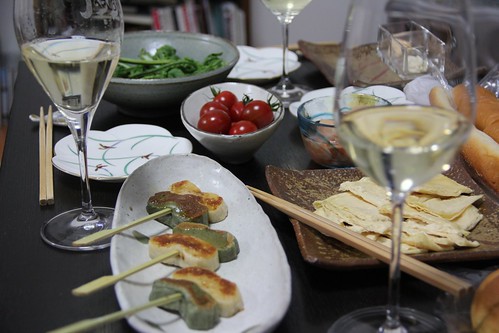










![Video: Take a 3 Minute Trip to Kyoto! [Day 71-77]](http://findingsachi.com/wp-content/uploads/2013/05/video-3-minute-trip-to-kyoto-day-71-77-55x55.jpg)






It was so enjoyable to read your travel blog and see all of the wonderful places and food in Japan. You have always been one of the most cheerful people I have known and that wonderful spirit of yours comes through in every post, picture, and video. I’m starving right now thanks to you
Best wishes on this adventure and the ones to come.
I like the sound of dashi… flavour without fat. Now that is a great invention!
There are so many Japanese dishes not known in the west!
Those mochifu look really good! I want to try that sometime^^